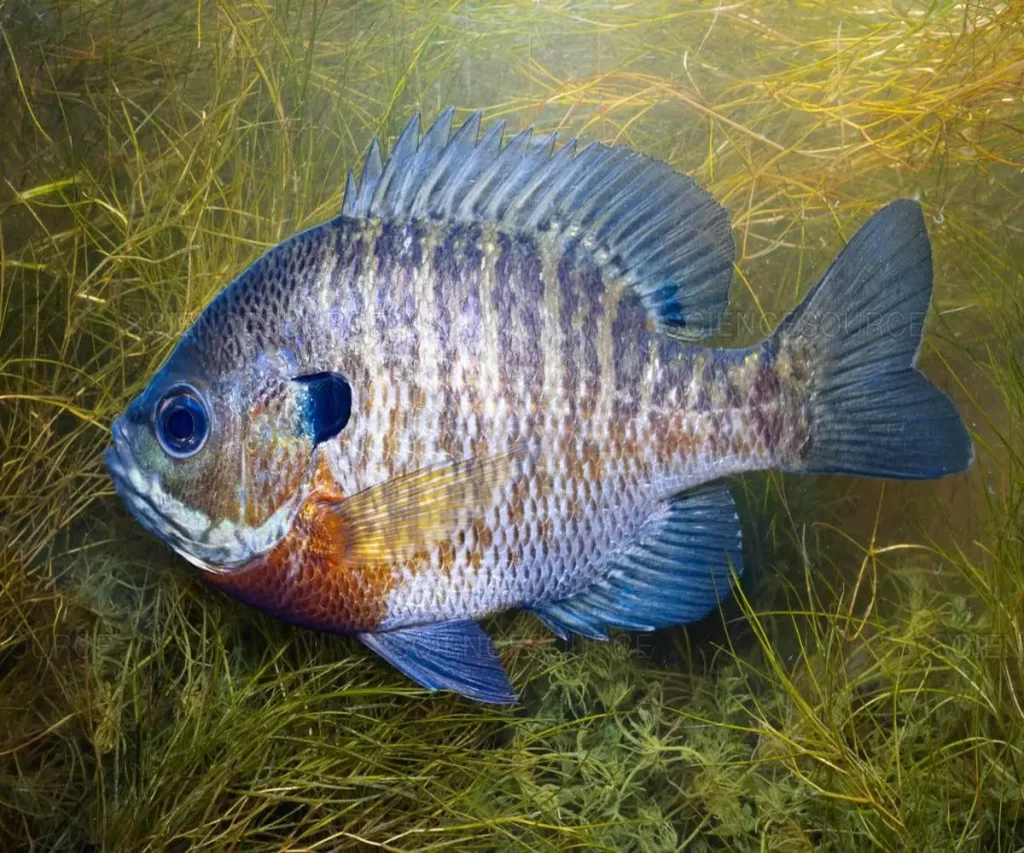
Bluegill Fish Species Guide
The Bluegill, scientifically known as Lepomis macrochirus, is a species of freshwater sunfish native to North America. It is one of the most popular and widely distributed panfish species, known for its vibrant colors, distinctive markings, and delicious taste. Anglers of all skill levels often pursue Bluegill for recreational fishing, making it an iconic species in freshwater ecosystems. In this comprehensive guide, we will explore various aspects of the Bluegill, including its biology, habitat, behavior, fishing techniques, and conservation efforts.
Taxonomy and Identification
Taxonomy
The Bluegill belongs to the Centrarchidae family, which includes other popular freshwater species such as largemouth bass and crappie. Within this family, Bluegill is classified under the Lepomis genus and the macrochirus species.
Physical Characteristics
Bluegill are characterized by their distinctive appearance. They have a compressed, oval-shaped body with a small mouth and a pointed pectoral fin. The fish’s most striking feature is its vibrant coloring. Mature Bluegill males often display bright blue and purple hues on their gill covers, leading to the name “Bluegill.” The body is generally olive-green, with vertical bars that can vary in intensity.
Distribution and Habitat
Native Range
Bluegill are native to North America, with their range extending from the eastern United States to the Midwest and down to northeastern Mexico. Over time, the species has been introduced to various other regions globally, leading to its presence in many freshwater environments.
Preferred Habitat
Bluegill thrive in a variety of aquatic habitats, including lakes, ponds, rivers, and reservoirs. They are particularly abundant in slow-moving or still waters with abundant vegetation. Bluegill prefer clear water with submerged structures like aquatic plants, fallen trees, and submerged rocks, providing cover and nesting sites.
Life Cycle and Reproduction
Spawning Behavior
Bluegill exhibit fascinating reproductive behaviors. They typically spawn during the spring and early summer when water temperatures rise. Males construct circular nests in shallow water, often near the shoreline. The male creates the nest by fanning the substrate with its tail, creating a depression where the female can deposit her eggs. After spawning, males guard the nest and protect the eggs until they hatch.
Growth and Maturation
Bluegill grow rapidly, reaching sexual maturity within a year or two. Their growth rate can be influenced by factors such as water temperature, food availability, and overall habitat conditions. As they mature, Bluegill often display more vivid colors, making them easily distinguishable from younger individuals.
Feeding Habits
Diet
Bluegill are opportunistic feeders with a diverse diet. Their primary food sources include insects, crustaceans, small fish, and aquatic vegetation. Young Bluegill primarily feed on zooplankton and insect larvae, while adults consume a wider range of prey. Their small mouths are adapted for capturing and consuming a variety of small organisms.
Fishing Techniques
Bluegill are a popular target for anglers, especially those new to fishing. They are often caught using lightweight tackle, such as ultralight spinning rods or fly fishing gear. Common bait options include worms, crickets, and small lures that mimic the appearance of insects or small fish. Anglers frequently use bobbers or floats to suspend bait at a specific depth, making it more enticing to Bluegill.
Regulations and Conservation
It’s essential for anglers to be aware of fishing regulations to ensure the sustainability of Bluegill populations. Many regions have size and bag limits to prevent overharvesting. Additionally, catch-and-release practices can help maintain healthy fish populations, allowing individuals to grow and reproduce.
Challenges and Conservation
Habitat Loss and Degradation
Bluegill face challenges related to habitat loss and degradation. Urbanization, pollution, and alterations to natural water flow can negatively impact their preferred habitats. Conservation efforts focus on preserving and restoring these environments to ensure the continued health of Bluegill populations.
Invasive Species
The introduction of non-native species can pose a threat to Bluegill populations. Invasive species may compete for resources, prey on Bluegill eggs and fry, or introduce diseases. Conservation programs often involve monitoring and managing invasive species to minimize their impact on native fish populations.
Conclusion to: Bluegill Fish Species
The Bluegill holds a special place in the hearts of anglers and nature enthusiasts alike. Its vibrant colors, accessible habitats, and willingness to bite make it an ideal species for both novice and experienced anglers. Understanding the Bluegill’s biology, habitat preferences, and conservation needs is crucial for ensuring the long-term health of this iconic freshwater fish. Whether you’re a seasoned angler seeking a relaxing day on the water or a nature enthusiast interested in the intricacies of aquatic ecosystems, the Bluegill offers a captivating and enjoyable experience. So, grab your fishing gear, head to your favorite fishing spot, and enjoy the thrill of catching one of North America’s most beloved freshwater species—the Bluegill.